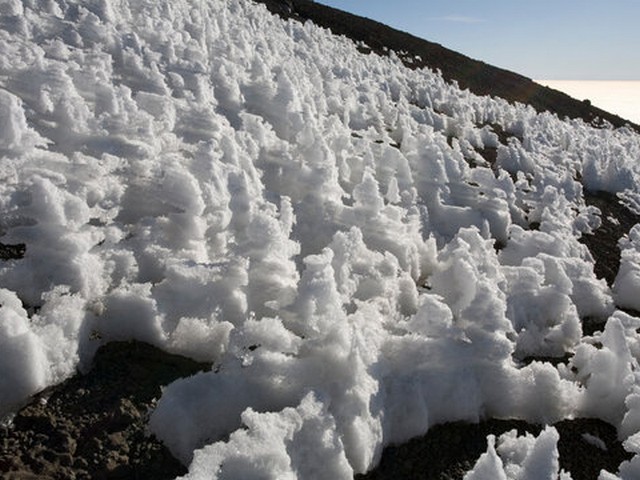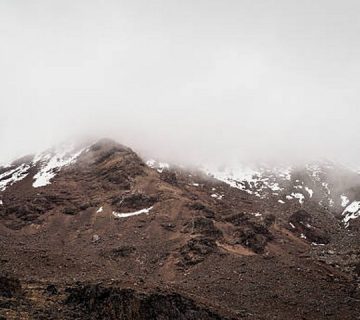Discover the Best Places To Spot Wildlife On Kilimanjaro
Welcome to the majestic Mount Kilimanjaro, where the air is crisp, the landscapes are breathtaking, and the wildlife is as diverse as it is enchanting. If you’re looking to combine the thrill of trekking with the joy of wildlife spotting, you’re in for a treat! In this blog post brought to you by Kilimanjaro Centre for Trekking and Ecotourism (KCTE), we’ll guide you through the best places on Kilimanjaro to spot some of Africa’s most fascinating animals. Get ready to immerse yourself in nature and create memories that will last a lifetime.
The Lush Rainforests of the Lower Slopes
Home to Playful Monkeys and Colorful Birds
As you begin your ascent from the base of Kilimanjaro, the thick, verdant rainforest envelops you. This is where the magic of wildlife spotting starts. The lower slopes of Kilimanjaro are a sanctuary for the Black-and-White Colobus Monkeys, known for their striking black and white fur and long, elegant tails. These arboreal creatures are a sight to behold as they leap gracefully from tree to tree.
Not to be outdone, the rainforest is also a haven for bird enthusiasts. Keep your eyes peeled and binoculars ready for the Hartlaub’s Turaco, a bird so vibrantly green it seems to merge with the leaves, yet stands out due to its striking red wingtips. The air is filled with the symphony of bird calls, each more melodious than the last, creating a vibrant acoustic backdrop to your trek.
The Heath and Moorland
A Unique Habitat with Unique Wildlife
As you ascend beyond the forest, the dense greenery gives way to the heath and moorland zone. This area may seem less lively at first glance, but it holds its own charm when it comes to wildlife. One of the stars of this zone is the Kilimanjaro Tree Hyrax, a small creature with a big voice. Often heard at night, its distinctive calls echo across the moorland.
The sparse bushes and high altitude make this a perfect spot to observe some of Kilimanjaro’s raptors. The African White-backed Vulture and the Verreaux’s Eagle are often seen soaring high above, surveying the land. Their impressive wingspans make them easy to spot against the vast, open skies.
Alpine Desert
The Realm of Large Birds and Nocturnal Critters
Venturing further up, the landscape transforms dramatically into what is known as the alpine desert. The vegetation is sparse, but life here has adapted to thrive under extreme conditions. During the day, the Lammergeier, or bearded vulture, can be seen gliding majestically. This bird is remarkable not only for its size but also for its unique method of feeding, which involves dropping bones from great heights to crack them open.
Nighttime in the alpine desert offers a whole new world of wildlife spotting. The Four-striped Grass Mouse, although small, is quite active in the cooler temperatures of the night. Their subtle movements often attract the attention of night-time bird predators like owls, adding an exciting element to nocturnal treks.
The Summit: Uhuru Peak
A Surprising Spot for Wildlife Enthusiasts
Reaching the summit of Kilimanjaro is an achievement in itself, but imagine the thrill of spotting wildlife at the roof of Africa! While animal sightings are rare at this extreme altitude, the tough White-necked Raven often makes an appearance, drawn by the opportunity to scavenge. Observing these intelligent birds in such a stark and challenging environment is a poignant reminder of the resilience of life.
Why Book Your Kilimanjaro Adventure with KCTE?
Choosing Kilimanjaro Centre for Trekking and Ecotourism (KCTE) means opting for an experience that is both thrilling and responsible. We are committed to sustainable tourism practices that protect the environments we explore and benefit the local communities. Our knowledgeable guides are passionate about wildlife and are eager to share their insights to enhance your trekking experience.
FAQs
What is the best time of year to spot wildlife on Kilimanjaro?
The best time for wildlife spotting on Kilimanjaro is during the dry seasons, from June to October and from December to March. These periods provide favorable trekking conditions and increased wildlife visibility.
Do I need special equipment for wildlife spotting on Kilimanjaro?
While you don’t need specialized equipment, a good pair of binoculars and a camera with a decent zoom will enhance your experience. Also, dressing in layers will help you adjust to the varying temperatures as you ascend.
How can I ensure a responsible wildlife spotting experience?
Always maintain a respectful distance from the wildlife, keep noise to a minimum, and follow the guidance of your KCTE guide. Our guides are trained to ensure a safe and respectful encounter with nature.
In conclusion, Mount Kilimanjaro offers more than just a trekking challenge; it’s a vibrant ecosystem teeming with wildlife waiting to be discovered. From the playful monkeys of the rainforest to the majestic eagles of the high altitudes, Kilimanjaro is a wildlife enthusiast’s paradise. Ready to embark on this adventure? Book your climb with Kilimanjaro Centre for Trekking and Ecotourism (KCTE) today and take the first step towards an unforgettable journey!




